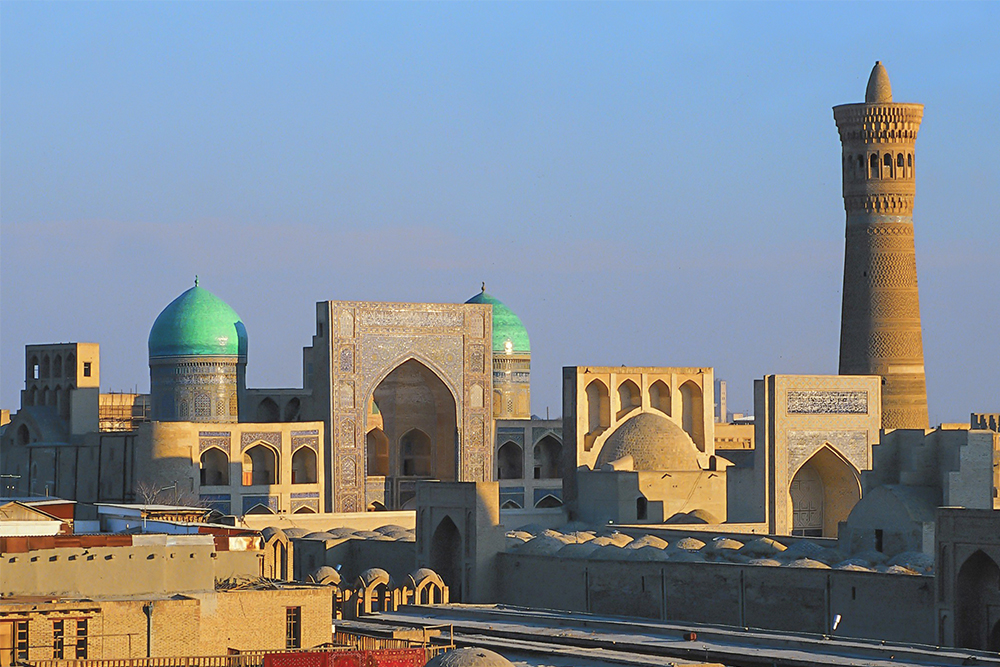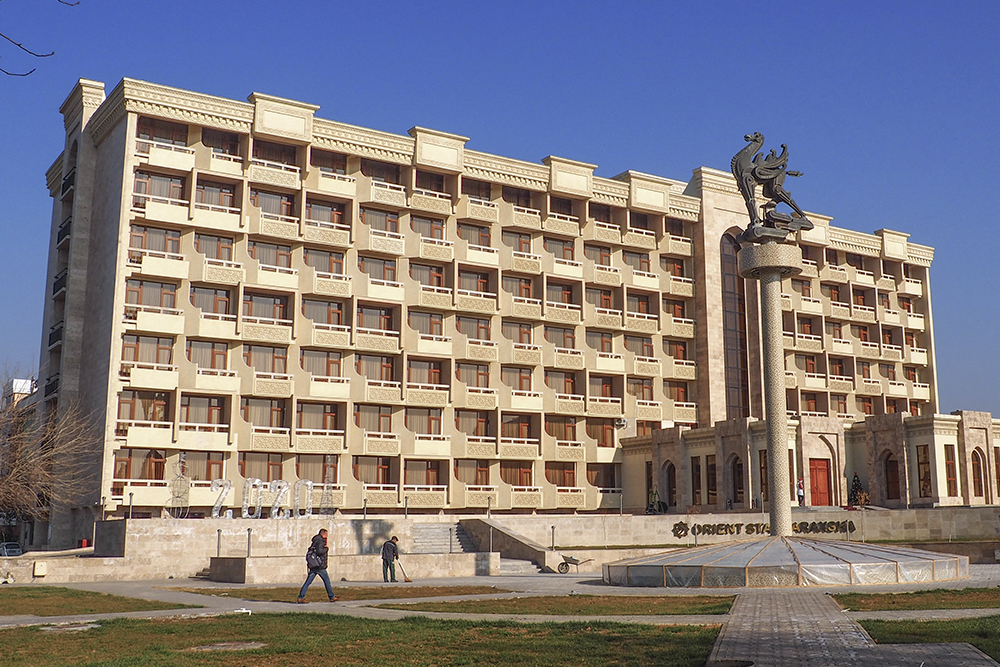Chor Minor (from Persian - four minarets) is an original and, one might say, unique structure, not only in Bukhara, Uzbekistan, but also in all of Central Asia. Chor Minor is located in the depths of an old residential area (mahalla), 10 minutes' walk from Lyabi-Khauz.
The main accent of a once large-scale functional structure, either a madrasah, has been preserved to this day, because the remains of cells - hujras, where students could live, or a caravanserai, where traders could stay, or a mosque (since there are as many as 4 pseudo minarets, which were usually built in a complex with a mosque) have been preserved.
The monument dates back to the 17th - early 18th centuries and is a building with four minarets at the corners and a dome-roof between the minarets. The minarets apparently did not serve their typical purpose - a platform for the muezzin inviting believers to prayer, although it is possible that the muezzin exited through one minaret onto the roof of the building. All four towers - minarets are covered with blue and turquoise tiles, the pattern of which is different for each tower. Unfortunately, the entire madrasah complex with hujras, an inner courtyard, and a mosque has been lost over the past 200 years. It is believed that the investor in the construction of the madrasah was a wealthy assimilated Turkmen merchant Niyaz-kul. The date of construction of Chor-Minor - 1807 is indicated inside the domed room. For many centuries (until the end of the 80s of the 20th century), storks nested on all four domes of the Chor-Minor minarets, which was considered a special lucky sign. The nests reached almost a meter in height and weighed up to 200 kg. Unfortunately, due to the urbanization of the city and the disappearance of the storks' usual food supply, the nests were abandoned and then, during restoration, were removed from the domes.










